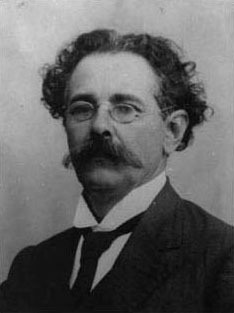Benedito Calixto: The Visionary Painter Who Shaped Brazil's Visual Memory.
Benedito Calixto: The Visionary Painter Who Shaped Brazil's Visual Memory. As one of Brazil's most significant artists of the late 19th and early 20th centuries, his body of work transcends mere aesthetics to become a fundamental pillar in the visual construction of Brazilian historical identity.
FACES AND FACTS
Unveiled Brazil
8/3/20255 min read


Benedito Calixto de Jesus (1853–1927) was more than a painter; he was a master chronicler, a visual storyteller whose art captured the very soul of a nation in transition. As one of Brazil's most significant artists of the late 19th and early 20th centuries, his body of work transcends mere aesthetics to become a fundamental pillar in the visual construction of Brazilian historical identity. Calixto's canvas was a window into Brazil's past, meticulously detailing the vibrant coastline of São Paulo, foundational historical events, and the nation’s deeply religious landscape. While deeply rooted in the academic tradition of his time, his influence extends far beyond national borders, finding a renewed and exciting life in contemporary international studies on art history, urbanism, and cultural memory.
His work offers a unique perspective on a Brazil in the making—a nation searching for its identity through monumental historical paintings, sacramental realism, and ordered visual narratives. For art historians, cultural enthusiasts, and anyone seeking to understand the formative years of this South American giant, exploring Calixto's art is a journey into the visual heart of the nation.
From Humble Beginnings to Parisian Academies
Born on October 14, 1853, in the small town of Conceição de Itanhaém on São Paulo's southern coast, Calixto's journey began in modest circumstances. He was a self-taught artist, starting his career by sketching with charcoal and quickly gaining a reputation as a gifted portraitist in the state's interior. His talent did not go unnoticed. Thanks to a scholarship from the Santos Commercial Association, Calixto had the extraordinary opportunity to study at the prestigious Académie Julian in Paris. There, he refined his craft under the tutelage of masters like Gustave Boulanger and William Bouguereau, absorbing the finest artistic techniques of the European academic tradition.
Upon his return to Brazil, Calixto settled between Santos and São Paulo, where he embarked on an incredibly prolific career. He painted an astonishing variety of subjects, including stunning landscapes, powerful religious murals, detailed historical portraits, and vivid urban scenes. When he passed away on May 31, 1927, in São Paulo, he left behind a monumental legacy of over 1,700 cataloged works.
A Meticulous and Multifaceted Body of Work
Calixto was renowned for his unwavering academic rigor and his use of extensive visual and documentary sources. He was not a painter who relied on pure imagination; he was a diligent researcher. He meticulously used photographs, sketches, and historical documents to compose canvases that captured the Brazilian past with a stunning degree of fidelity. His thematic range was as vast as it was significant, covering:
Brazilian History: His paintings are visual records of pivotal moments, from the Founding of São Vicente and the Flood of the Várzea do Carmo to the Proclamation of the Republic at Praça da Sé. These works are not just art; they are historical artifacts.
Religious and Sacred Art: Calixto’s deep faith is evident in his masterful religious frescos, such as those adorning the Church of the Sacred Heart of Jesus (SP) and the Monastery of São Bento. These murals are testaments to his technical skill and spiritual devotion.
Urban and Marine Landscapes: Calixto's canvases document the evolution of coastal São Paulo. His iconic views of the Port of Santos, painted before and after its industrialization, offer a powerful visual narrative of progress and change.
Symbolic and Allegorical Art: His stained-glass windows, like The Vision of Anhanguera at the Coffee Museum, brilliantly weave together myth, progress, and Paulista identity, creating a powerful statement about the state's character.
International Recognition and Contemporary Relevance
Calixto's work is a fertile ground for scholars both in Brazil and abroad. The meticulous detail, historical depth, and cultural resonance of his paintings continue to be a focus of critical study. Key publications and research include:
Benedito Calixto: Um pintor à beira-mar / A Painter by the Sea (Pinacoteca Benedicto Calixto, 2002): A bilingual publication that provides an in-depth look at his life and work.
Karin Philippov's research on "The historiographical silence in São Paulo's religious painting prior to the Week of '22": This study critically examines Calixto's role in the religious art scene before the rise of Modernism.
Academic articles on Globethics.net and in renowned journals: International scholars are increasingly discussing Calixto in the context of urban transition, the delicate intersection of sacred art and nationalism, and the crucial role of visual imagery in constructing the Brazilian Republic.
This renewed interest proves that Calixto is not a forgotten figure of the past but a crucial lens through which to understand a complex and changing Brazil.
Where to Experience His Masterpieces
For those eager to witness the power of his art firsthand, Calixto’s work is prominently displayed in several key locations:
In SANTOS: The Coffee Museum is home to his monumental stained-glass windows and triptychs depicting the Port of Santos. The Pinacoteca Benedito Calixto offers a permanent collection of his paintings, letters, and personal objects, providing an intimate look into the artist's life.
In SÃO PAULO: The Pinacoteca do Estado houses his classic works, including the Founding of São Vicente. His magnificent religious frescos can be admired at the Church of the Sacred Heart of Jesus and the Monastery of São Bento.
Online: For a digital immersion, his works can be viewed on Google Arts & Culture and in various academic repositories like UNICAMP, SciELO, and Globethics.
An Enduring Legacy
It is significant that Calixto did not participate in the pivotal Modern Art Week of 1922. His absence is as telling as his presence in the pre-Modernist art scene. He represents the Brazil that existed before the modernist rupture—a nation seeking to define itself through historical paintings, meticulous realism, and a structured visual narrative. He was a beacon of a tradition that the modernists sought to dismantle, yet his influence remains undeniable.
Today, Benedito Calixto is celebrated as one of Brazil's greatest visual chroniclers. His work is essential for anyone—from a Brazilian student to an international art lover—who wishes to understand the territorial, symbolic, and urban formation of the country. His canvases are more than paintings; they are powerful windows into a Brazil under construction, where the coastline, myth, and history coexist in perfect, pictorial harmony. To truly know Brazil from the inside, one must look at the world through the eyes of Benedito Calixto.
Benedito Calixto Brazilian painter biography, who was Benedito Calixto de Jesus, Benedito Calixto famous works and paintings, history of Benedito Calixto and academic art, Benedito Calixto's influence on Brazilian art history, how to start an affordable art collection, famous paintings and their hidden meanings, beginner's guide to art history periods, where to find local art classes for adults, tips for visiting a modern art museum, understanding abstract art for dummies, best books about famous artists' lives, online communities for emerging artists and collectors, what is the difference between oil and acrylic painting, art appreciation for non-artists, how to authenticate a vintage painting, investing in contemporary art for beginners, best online art marketplaces for emerging artists, guide to buying art at auction houses, tax benefits of donating fine art, how to care for and restore old paintings, where to find limited edition prints by famous artists, tracking the value of your art portfolio, finding a reputable art appraiser near me, collecting digital art and NFTs explained, Benedito Calixto "Fundação de São Vicente" analysis, Benedito Calixto Port of Santos paintings, meaning behind Benedito Calixto's religious frescos, Benedito Calixto "Vista do Porto de Santos" symbolism, where to see Benedito Calixto murals in São Paulo, Benedito Calixto's use of photography in his art


